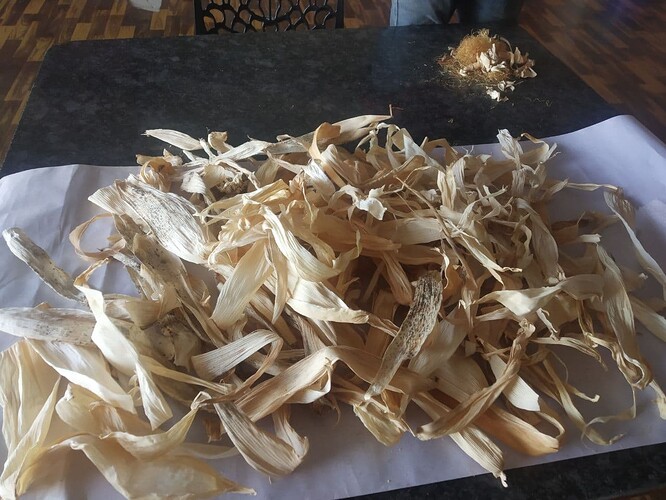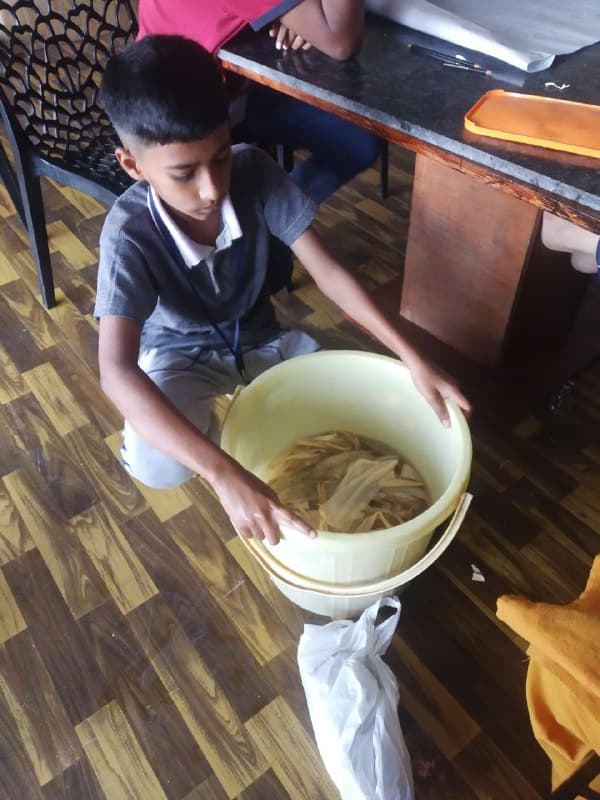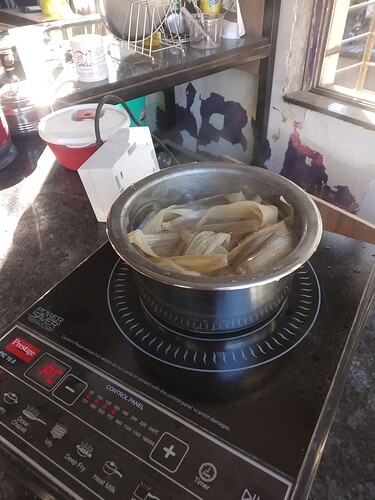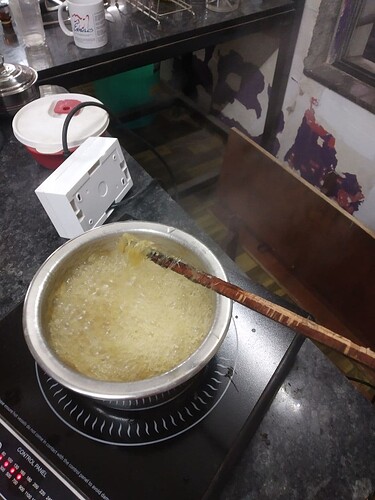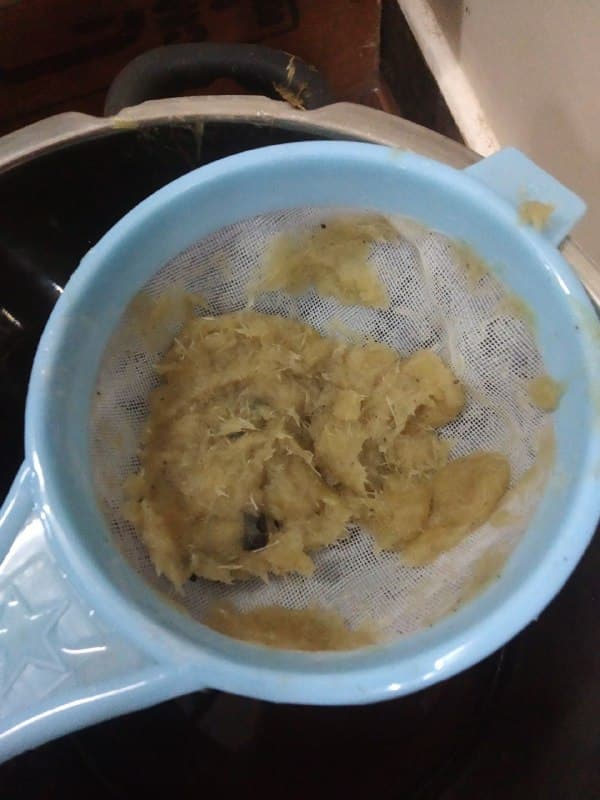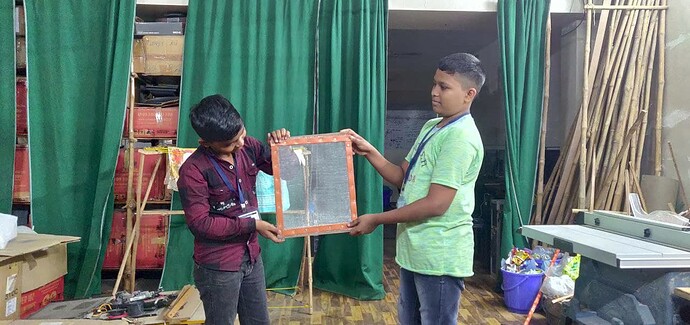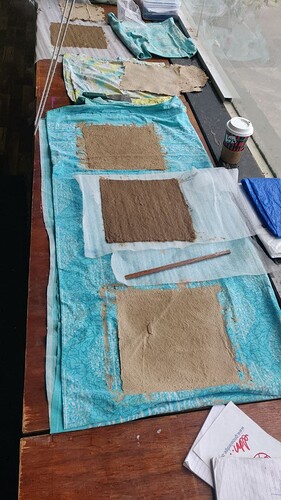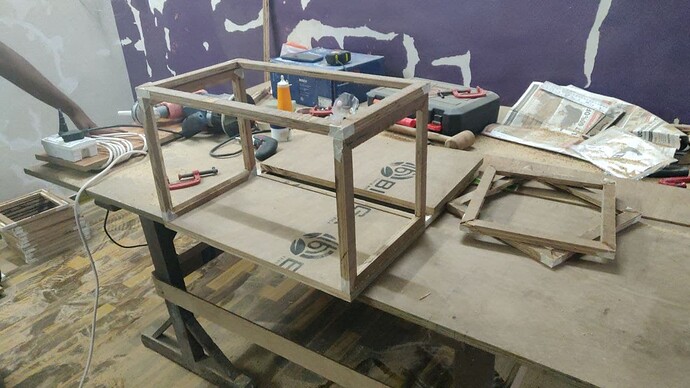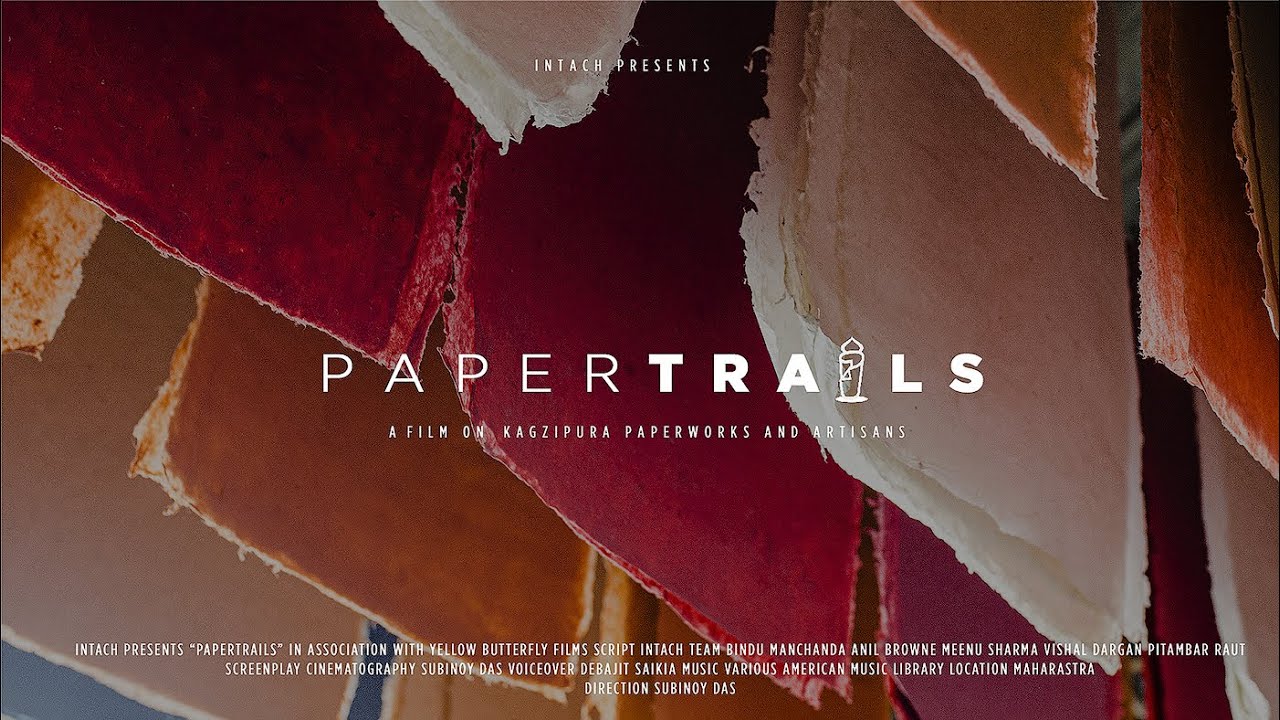Nature’s Gift: Transforming Corn Husks into Beautiful Paper:
We created handmade paper from corn husks as an act of recycling, started by collecting and drying the husks. Once they were dry, we soaked them in a container of water for a day to soften them.
12 Jan 24, LA.Day 1, Cleaned the corn husk.
Soaking them in a container of water for 24 hours to soften them.
Day 2
Next, twe boiled soaked corn husk with caustic soda to digest almost everything except cellulose fibers.
After two hours of boiling we get the pulp.
This pulp is now ready for spreading it as a sheet / paper.
Making a wooden frame with a metal mesh
We made a rectangular frame using the reusuable wood available in the makerspace. We fixed a metal mesh to size and fixed it to the frame with staples. Such is frame is called deckle.
We mixed pulp clean water in a tray, large enough to dip and move the deckle. Once the pulp is evenly spread on the deckle as a thin film, we lift to drain the excess water. Then we transfer the evenly distributed pulp on a dry cloth. We used cloth to blot excess water and left for air drying overnight.
Finishing: Once the paper is completely dry, it can be trimmed using a paper cutter or scissors to the desired shape or size. The quality of the paper depends on factors like fiber consistency, pressing technique, and drying conditions. With more practice, we will be able to get a good-quality, usable paper.
That’s it! We can also decorate the paper however we like. By following these steps, you can also create beautiful handmade paper from corn husk.
